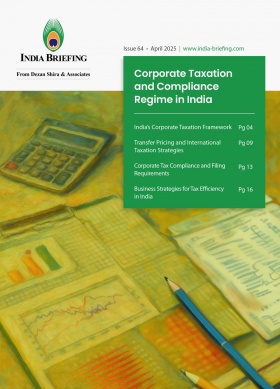Indian Exporters Face 50% US Tariff Rate Effective August 27, 2025
The United States (US) has announced the imposition of additional tariff rates on goods from India under Executive Order (EO) 14329, signed on August 6, 2025.
These custom duties come into force from 12:01 a.m. eastern daylight time (EDT) on August 27, 2025, following official changes to the Harmonized Tariff Schedule of the US (HTSUS).
The US has issued an official notice confirming that Indian exports will face a 50 percent tariff starting August 27, 2025. The US Customs and Border Protection (CBP), Department of Homeland Security, released the notification on August 25, 2025.
With this move, the overall tariff burden on Indian products entering the American market could climb to as high as 50 percent—one of the steepest rates imposed by the US. Indian exporters are preparing for setbacks.
How the US tariff on India will apply
Under the new rules, most Indian goods shipped to the US will now face their regular import duty plus an extra 25 percent charge. This is set out in tariff code HTSUS 9903.01.84, which forms the basis of the policy.
There are, however, some exceptions. Shipments that left India before August 27, 2025, and are cleared in the US before September 17, 2025, will not face the additional duty. Certain product categories, such as steel, aluminum, passenger vehicles, light trucks, copper products, humanitarian donations, and informational materials like books or films, are also excluded from the surcharge.
To manage these changes, the US has introduced new tariff codes. These codes specify which goods are covered by the 25 percent duty, which are exempt, and which shipments qualify for temporary relief. Importantly, Indian products entering US Foreign Trade Zones after the effective date must be recorded under a special “privileged foreign status,” meaning they will still be subject to the new tariffs once released into the American market.
|
Key Tariff Classifications |
||
|
Heading |
Article description |
Duty rate |
|
9903.01.84 |
Most Indian-origin goods |
Base rate + 25 percent |
|
9903.01.85 |
Shipments in transit before Aug 27, cleared by Sept 17 |
Base rate only |
|
9903.01.86 |
Certain exempted goods (per tariff notes) |
Base rate only |
|
9903.01.87 |
Steel, aluminum, autos, and related products |
Base rate only |
|
9903.01.88 |
Humanitarian donations |
Base rate only |
|
9903.01.89 |
Informational materials |
Base rate only |
Source: Notice, US Customs and Border Protection, Department of Homeland Security
Prior to the new tariff order, Indian exports to the US were generally subject to import duties between 0.5 and 10 percent. Under the revised framework, an additional 25 percentage points are now levied on top of these existing base duties.
US customs base rates on Indian goods in 2024
Indian exports to the United States have traditionally benefited from relatively low customs duties under the Most-Favored-Nation (MFN) framework. While tariff levels varied by sector, the overall weighted average remained in the range of 2–3 percent.
|
S.no. |
Sub-sector |
Base rates on imports from India in 2024 |
|
1. |
Alcohol, wines, etc. |
2.49 |
|
2. |
Dairy products |
1.54 |
|
3. |
Fish, meat, frozen and processed |
0.59 |
|
4. |
Live animal products |
0.66 |
|
5. |
Processed foods, sugar and cocoa preparations |
4.67 |
|
6. |
Edible oils |
1.4 |
|
7. |
Cereals, vegetables, fruits and spices |
3.1 |
|
8. |
Tobacco, cigarettes, products |
201.15 |
Source: Trump’s Reciprocal Tariffs and India; Flagship Report, GTRI
On the industrial side, the US customs rates on India are even lower, with most sub-sectors facing duties between 0.4 percent and 3.5 percent.
Pharmaceuticals, one of India’s largest export categories, face almost negligible tariffs at 0.01 percent, while textiles, footwear, and ceramics pay slightly higher rates of 3–9 percent.
|
S.no. |
Sub-sector |
Base rates on imports from India in 2024 |
|
1. |
Automobiles, Bikes and Parts |
1.05 |
|
2. |
Shoes, footwear, parts |
8.77 |
|
3. |
Diamonds, gold, silver and allied products |
2.12 |
|
4. |
Pharmaceuticals |
0.01 |
|
5. |
Artificial flowers, umbrellas, headgears |
2.59 |
|
6. |
Clock, medical, furniture, toys, work of art |
1.42 |
|
7. |
Ceramic products, glass, stone, cement products |
3.38 |
|
8. |
Paper, wood articles |
1.18 |
|
9. |
Rubber articles |
2.03 |
|
10. |
Electrical, telecom, and electronics products |
0.41 |
|
11. |
Textiles, fabric, yarns, fiber, carpets |
3.55 |
|
12. |
Chemicals except pharma |
3.39 |
|
13. |
Plastic articles |
4.38 |
|
14. |
All machinery, boilers, turbines, computers, parts |
1.3 |
|
15. |
Railway, aircraft, and ship parts |
0.23 |
|
16. |
Leather products |
7.29 |
|
17. |
Products of iron and steel |
1.49 |
|
18. |
Made-up, worn clothing |
8.99 |
|
19. |
Products of base metals |
2.98 |
|
20. |
Ores, minerals, and petroleum |
6.67 |
|
21. |
Garments |
12.05 |
Source: Trump’s Reciprocal Tariffs and India; Flagship Report, GTRI
US ends duty-free de minimis treatment
From August 29, 2025, the US will withdraw duty-free benefits on imported goods valued at US$800 or less. The move, announced by the US’s CBP on August 18, eliminates the de minimis exemption, meaning that all low-value shipments entering the country will now attract the standard range of duties, taxes, and fees.
For non-postal imports, compliance requirements will tighten. Shipments must be filed in the Automated Commercial Environment (ACE) under the appropriate entry type, and only parties authorized to make such filings will be allowed to do so.
Postal shipments face their own set of obligations: international carriers moving packages into the US will need to maintain either a single transaction bond or a continuous bond, while importers choosing to file postal entries must hold a basic importation and entry bond in line with US regulations.
Although the duty-free benefits will be been largely removed, some categories will remain protected. Donations and informational materials, as defined under the US law, will continue to qualify for duty-free treatment.
New duty rules for postal imports to the US
A major change also applies to postal imports. Under the International Emergency Economic Powers Act (IEEPA), these shipments will now be subject to tariffs that can be calculated in two ways. Importers may choose an ad valorem duty, tied to the product’s value and the applicable country-specific tariff rate, or a specific duty, set as a flat charge between US$80 and US$200 per item depending on the origin.
However, the specific duty option is temporary and will be phased out by February 28, 2026, after which all postal imports must follow the ad valorem method.
Implications for trade between India and the US
The new tariff measures are expected to have wide-ranging consequences for both Indian exporters and American businesses. For Indian companies, the additional duties will drive up the overall cost of their shipments, reducing price competitiveness in the US market and potentially leading to a decline in demand. On the American side, importers will need to navigate the updated tariff codes with care, ensuring that their consignments are correctly classified to avoid unexpected costs. Beyond the immediate commercial effects, the decision reflects a new layer of strain in US–India trade relations.
Background: India’s inclusion in the Russia sanctions framework
The additional US tariffs on Indian imports originate from the sanctions framework established under then US President Joe Biden. EO 14024 (April 2021) declared a US national emergency in response to Russia’s foreign activities, while EO 14066 (March 2022) prohibited the import of Russian-origin oil and petroleum products.
On August 6, 2025, President Donald J. Trump expanded this framework through EO 14329, citing India’s continued energy ties with Russia. As a result, US–India trade, previously characterized by relatively low tariff levels, now faces some of the steepest duties applied by Washington. Effective rates on many Indian exports have risen from single digits to nearly 50 percent, altering pricing structures and competitiveness in the US market.
About Us
India Briefing is one of five regional publications under the Asia Briefing brand. It is supported by Dezan Shira & Associates, a pan-Asia, multi-disciplinary professional services firm that assists foreign investors throughout Asia, including through offices in Delhi, Mumbai, and Bengaluru in India. Readers may write to india@dezshira.com for support on doing business in India. For a complimentary subscription to India Briefing’s content products, please click here.
Dezan Shira & Associates also maintains offices or has alliance partners assisting foreign investors in China, Hong Kong SAR, Dubai (UAE), Indonesia, Singapore, Vietnam, Philippines, Malaysia, Thailand, Bangladesh, Italy, Germany, the United States, and Australia.
- Previous Article Processing Payroll for Expats and Locals in India: Key Differences
- Next Article








